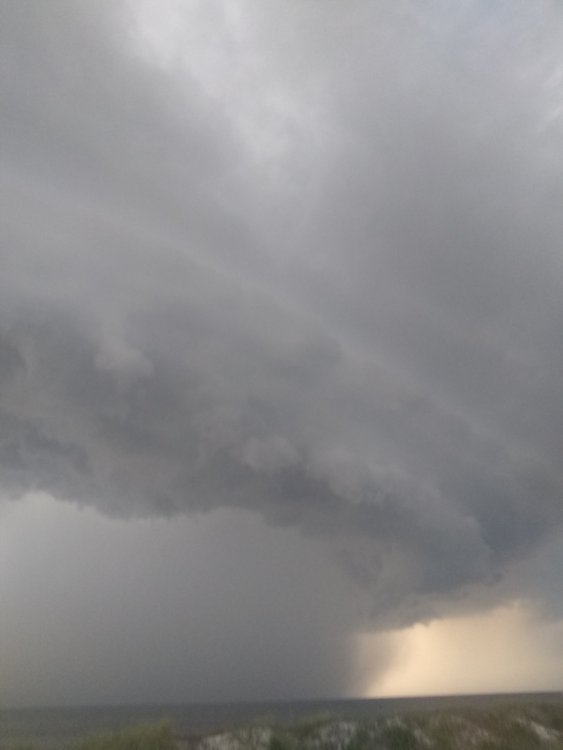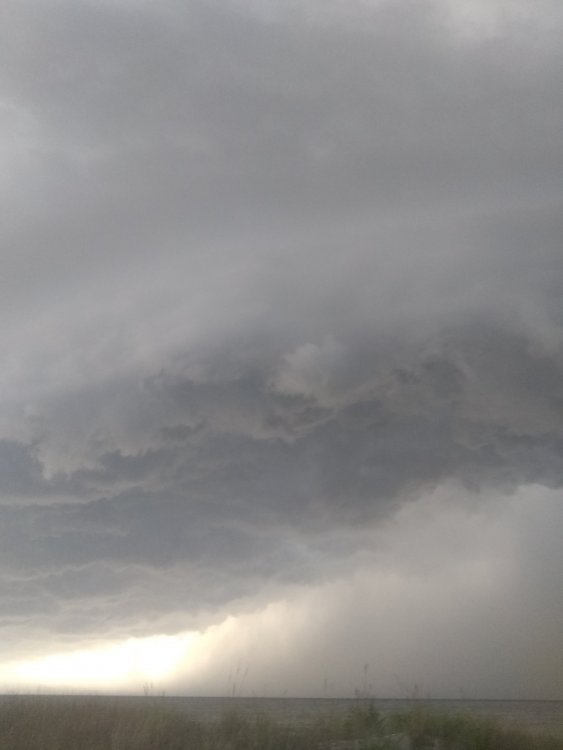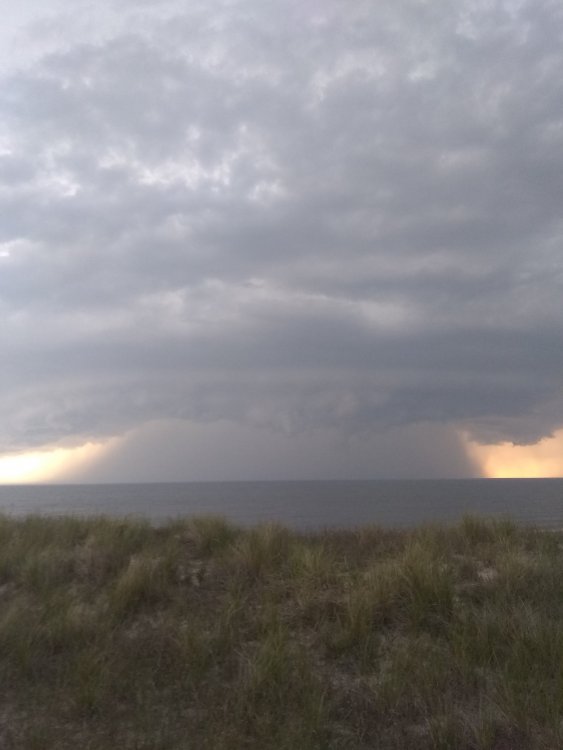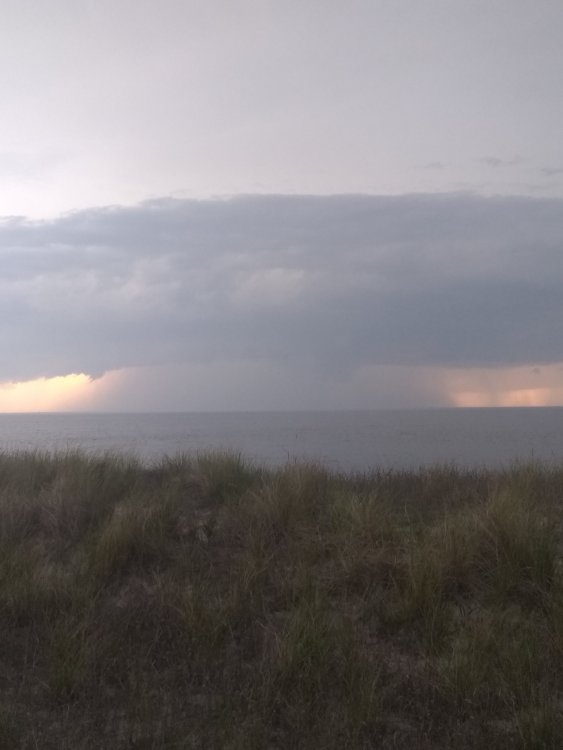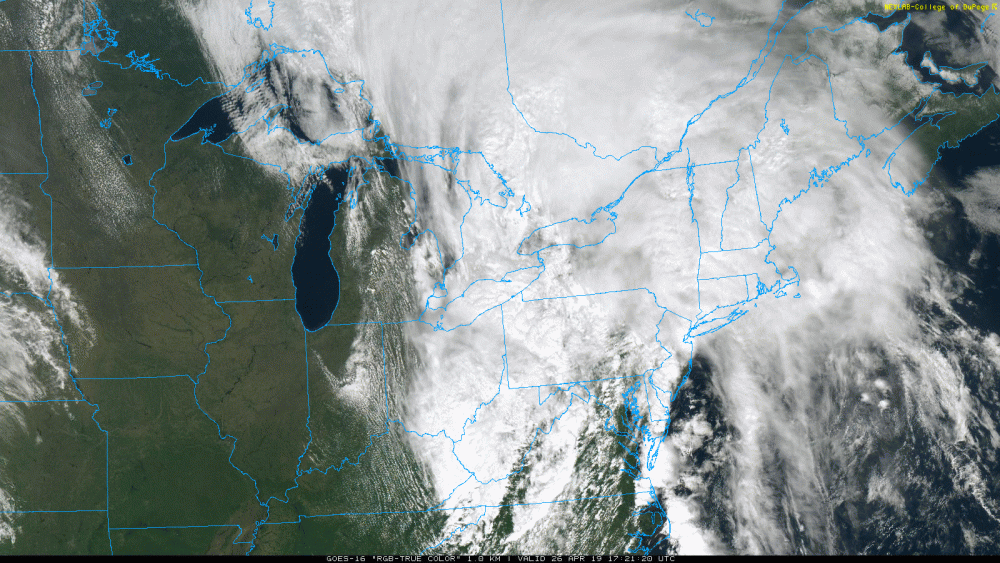-
Posts
1,732 -
Joined
-
Last visited
Content Type
Profiles
Blogs
Forums
American Weather
Media Demo
Store
Gallery
Everything posted by Vice-Regent
-
Hansen Et. al. The meltwater injector.
-
Is that 100% ice-free? 90% ice-free is regarded as largely the correct definition. Once that happens the rest is not far behind. The Arctic effectively turns into a sub-tropical ocean basin with persistent cloud cover in the winter. It is the primary mechanism for the tipping point.
-

2019 Mid-Atlantic Severe Wx - General Discussion
Vice-Regent replied to Kmlwx's topic in Mid Atlantic
Deck pics or it didn't happen.- 2,802 replies
-
- severe
- thunderstorms
- (and 4 more)
-

2019 Mid-Atlantic Severe Wx - General Discussion
Vice-Regent replied to Kmlwx's topic in Mid Atlantic
We have the money shot. Storm tracking on the coastal plain is incredible.- 2,802 replies
-
- severe
- thunderstorms
- (and 4 more)
-

2019 Mid-Atlantic Severe Wx - General Discussion
Vice-Regent replied to Kmlwx's topic in Mid Atlantic
Here are some pics from yesterday to keep us occupied while we wait. There was possibly a brief rain-wrapped waterspout. It is difficult to ascertain the peak intensity of this particular storm. Winds gusted to about 45mph on shore with visibility dropping to 1/8 mile. (Looking west towards Delaware 5/29/19)- 2,802 replies
-
- 3
-

-
- severe
- thunderstorms
- (and 4 more)
-

2019 Mid-Atlantic Severe Wx - General Discussion
Vice-Regent replied to Kmlwx's topic in Mid Atlantic
- 2,802 replies
-
- 3
-

-
- severe
- thunderstorms
- (and 4 more)
-

2019 Mid-Atlantic Severe Wx - General Discussion
Vice-Regent replied to Kmlwx's topic in Mid Atlantic
Our climo is turning into an Inland Gulf Coast type. Maybe Arkansas or Eastern Oklahoma where the main show shifts towards the warm season.- 2,802 replies
-
- severe
- thunderstorms
- (and 4 more)
-

2019 Mid-Atlantic Severe Wx - General Discussion
Vice-Regent replied to Kmlwx's topic in Mid Atlantic
It's always the blob. Looking for a June 2012 derecho but it never happens.- 2,802 replies
-
- severe
- thunderstorms
- (and 4 more)
-

2019 Mid-Atlantic Severe Wx - General Discussion
Vice-Regent replied to Kmlwx's topic in Mid Atlantic
91 at KWWD ... T-Storm probabilities upped to 70%. I am pumped. It's very rare to get back to back severe wx days locally. 3 days if you count yesterday.- 2,802 replies
-
- severe
- thunderstorms
- (and 4 more)
-

2019 Mid-Atlantic Severe Wx - General Discussion
Vice-Regent replied to Kmlwx's topic in Mid Atlantic
Looks promising. New QLCS forming west of the Blue Ridge?- 2,802 replies
-
- severe
- thunderstorms
- (and 4 more)
-

2019 Mid-Atlantic Severe Wx - General Discussion
Vice-Regent replied to Kmlwx's topic in Mid Atlantic
Roughly 0.80" or so in South Jerz. Much more to my south over Cape May Point.- 2,802 replies
-
- severe
- thunderstorms
- (and 4 more)
-

2019 Mid-Atlantic Severe Wx - General Discussion
Vice-Regent replied to Kmlwx's topic in Mid Atlantic
DC is the new Louisiana. You guys thought I was done just yet.- 2,802 replies
-
- severe
- thunderstorms
- (and 4 more)
-

2019 Mid-Atlantic Severe Wx - General Discussion
Vice-Regent replied to Kmlwx's topic in Mid Atlantic
Getting some sea-breeze interaction with the front-running stuff. Interesting event. It's got all of the signals of being a sub-historic severe wx outbreak.- 2,802 replies
-
- 1
-

-
- severe
- thunderstorms
- (and 4 more)
-

Southern MD / Lower Eastern Shore weather discussion
Vice-Regent replied to PrinceFrederickWx's topic in Mid Atlantic
How is it 32 at Salisbury and 39 in Georgetown? That is bizarre for sure. 31 at KWWD. Heavy snow burst but now dryslotted. -
DCA: 12/24 BWI: 11/25 IAD: 11/5 RIC: 12/16 Tiebreaker: 3.5"
-
-
-
Death by humidity and fog. The second shortest path (fastest being bottom melt from atlantification) to ice free/blue ocean. The most interesting melt season to date - most people just don't know it yet.
-
Something must be broken. I don't even know where to begin when explaining the discrepancy between HYCOM and PIOMAS ice volume.
-
Are you ready?
-
The AMOC is slow enough to stop further catastrophic melting of the Greenland Ice Sheet but fast enough to cause extreme heat events in Europe (and the US?). That can't be a good thing. As well we know Antarctica holds 5x the fresh water content of Greenland. Maybe it's just a natural variability and revision to the mean but I would say it's not a good sign. We still have tremendous heat transport in the Atlantic. This can't hold for much longer without causing massive damage to something/somebody. If you thought Sandy and Harvey was bad just wait a few years.
-
That's rain on ice at the surface. We shall see.
-
All fair points. The packing in of Global Warming into the political divisor was massively unethical and the momentum is relegated to a election winning (in this case losing) cliche. Democrats are the worst offenders to date. It's one thing to ignore the science and another to disparage it. I have never self-identified as democrat or republican. By and large Cape May County is red. (Republican). Cities are the number 1 reason for population overshoot and environmental degradation. It's clear to me now that environmentalism has been co-opted by neoliberalism and the obsession with consumer choices. Since this issue is so deeply embedded in politics (where it has no business being) it is necessary to elaborate on how we got here. This is a fiscal problem - a engineering problem. Democracy is not equipped to deal with such problems of scope.
-
Elaborate insight into the hazards of coastal life. What I was referring to was the enormous obstacle in reducing damage from sea level rise. Also as you point out increased coastal development masks the signal a bit and beach replenishment covers up the damage at least temporarily. Look no further than Tangier Island in the Chesapeake which should completely vanish from nautical charts by 2035 thereabouts. Essentially. You need to redesign civilization from the ground up to prevent catastrophic global warming without the usage of abrasive solar geoengineering. I think throwing global warming into the conspiracy theory basket is a great disservice to posterity and science. I'm sure all of the long-term posters would agree with this line of thought. There is no conspiracy in alarm-ism. Remember Global Warming is the canary in the coal mine hinting at the unsustainable nature of civilization (which had required millennia to advance to fossil fuel based agriculture). Take for example the amount of raw materials and rare earth minerals needed to sustain both the renewables and tech industries. We aren't doing enough and the window is closing on us rapidly.
-
We live in a deeply troubled society. Anyone debating that aspect of our life should get the cold shoulder. However I am concerned when such valid points are presented behind a facade of malicious intent or for lack of a better term - trolling. I'm not sure if such methods are effectual in changing the status quo. If nothing else - counter-productive. Until proven otherwise. Best to stay true to the purpose of this forum. Give us the proof. I have layed our why the Arctic is behaving in this manner - seemingly to shield itself from the onslaught of the heat flux over Siberia and North America. Sadly it just cements our demise even more as people become more complacent and the climate system has a instantaneous state change resulting in multi-meter decadal sea level rise.


